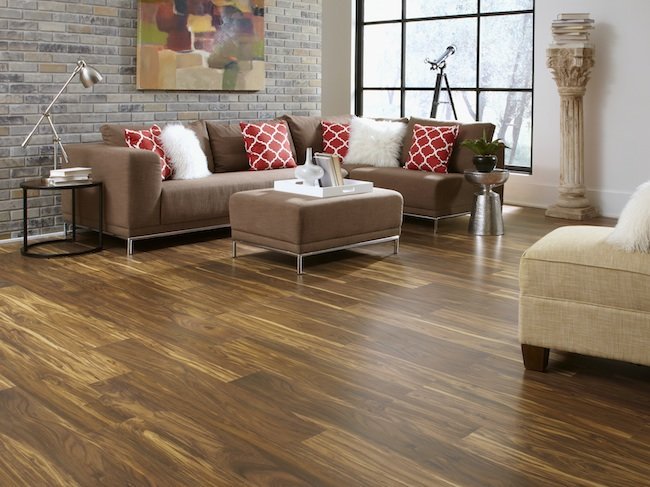
When designing your floor, you can choose from a variety of options today.
Cork is essentially made from a natural material, namely the bark of cork oak. It is particularly characterized by its insulating effect against water, among other things. The cork develops its insulating effect but also in terms of sound, which is especially important for a floor covering. Without destroying its properties, the cork flooring offers a variety of design options. So a cork floor can be kept after appropriate treatment in the design of wood to a concrete-like design. A cork floor is optionally laid in a bar or tile format. The installation takes place according to the desired design, without joints and floating. Cork flooring is now also available with tongue and groove, this must be put together when laying the individual parts of the floor. A cork floor is usually between four to six millimeters thick, a special substructure or an additional impact sound insulation is usually not necessary.
Benefits of a cork floor
A cork floor can be laid quickly and easily, it can be removed as soon as it can be moved. Especially when a move is pending or the cork floor no longer pleases, it can be replaced at short notice without major problems. Another benefit of cork flooring is its easy care. So no special care products are necessary, a simple wipe with water or vacuuming is sufficient. Once the cork floor has been attacked, it can be restored to its original state with special wax and oils. If that does not help, a cork floor can also be sanded down, much like a parquet floor. If you sand off your cork floor, you should note that this must be resealed again.
Easy care of a cork floor
This ease of care is due to the cork floor sealing. The seal is usually done with special resins on a water basis. But there are also seals made of chemical substances in the cork floor. The big disadvantage of such seals are the fumes that can arise. It is therefore advisable to pay attention to the nature of the seal when buying. Due to the natural components of cork, a cork floor is particularly suitable for asthmatics and allergy sufferers. A cork floor can not absorb dust or mites.
Disadvantages of the cork floor
Of course, a cork floor also has disadvantages, for example, not all cork floors are suitable for underfloor heating. Also you have to consider a few points when laying a cork floor, otherwise you will damage it. This is especially the case if one forgets the expansion joint along the wall or does not leave enough space. What many forget, a cork floor works so it can expand and contract again.
 savillefurniture Interior Design Ideas
savillefurniture Interior Design Ideas